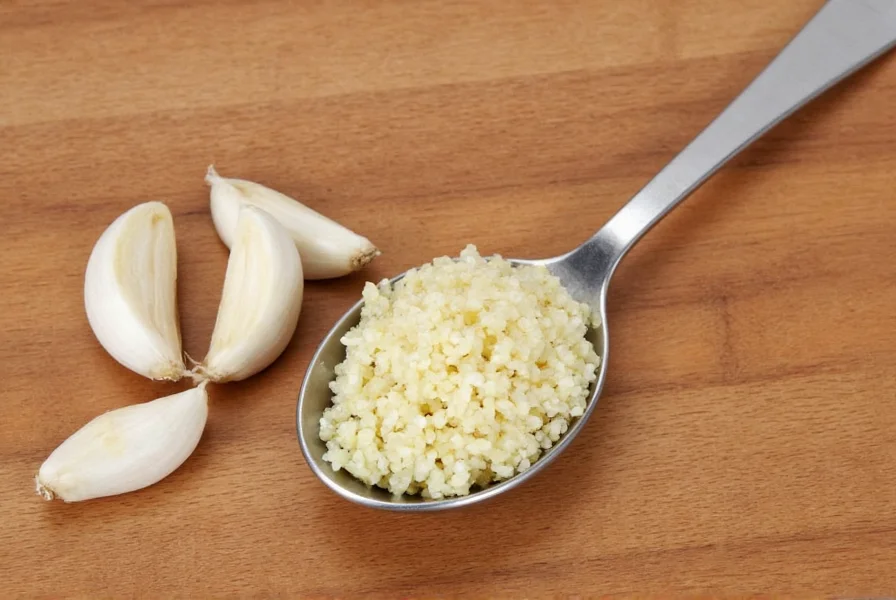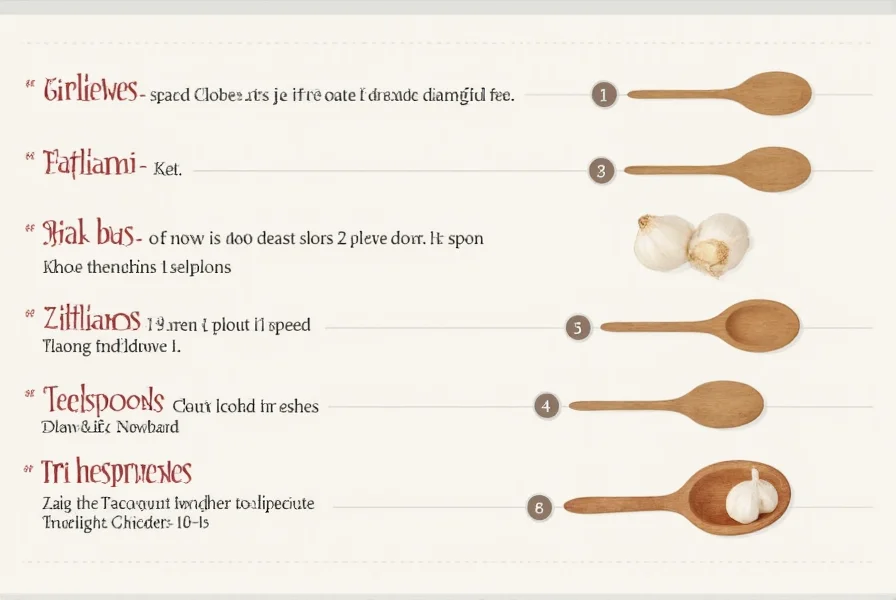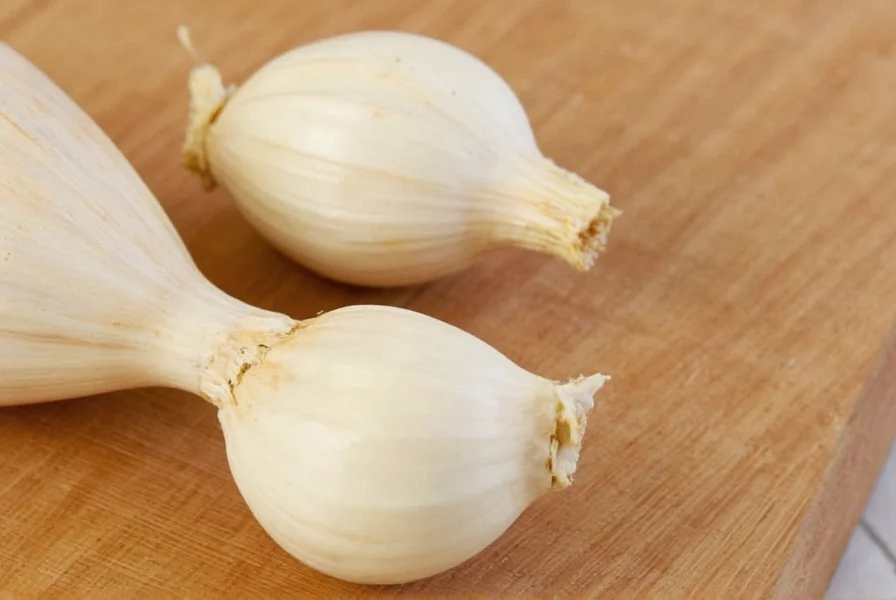Understanding garlic measurements is crucial for home cooks and professional chefs alike. When recipes specify garlic in cloves but you're working with pre-minced garlic or need to adjust quantities, knowing the exact conversion ensures your dishes achieve the perfect balance of flavors without overpowering them.
Factors Affecting Garlic Measurement Conversions
Garlic clove sizes vary considerably, which directly impacts teaspoon measurements. Commercially available garlic typically comes in three size categories:
| Garlic Clove Size | Minced Garlic Measurement | Chopped Garlic Measurement |
|---|---|---|
| Small (1/2" long) | 1/4 teaspoon | 3/4 teaspoon |
| Medium (3/4" long) | 1/2 teaspoon | 1 1/4 teaspoons |
| Large (1"+ long) | 3/4 teaspoon | 1 3/4 teaspoons |
The difference between minced and chopped garlic measurements matters because minced garlic releases more flavor compounds due to increased surface area. When converting garlic cloves to teaspoons for recipe accuracy, consider both the size of your cloves and your preparation method.
Practical Measurement Techniques
For the most accurate garlic measurements, follow these professional kitchen practices:
- Use a microplane grater for the most consistent minced garlic
- Measure after mincing, not before
- For critical recipes, weigh garlic (1 medium clove = 3-7 grams)
- Consider the age of garlic - older bulbs yield less volume
When substituting jarred minced garlic for fresh cloves, remember that commercial products often contain citric acid or other preservatives that slightly alter flavor intensity. A direct 1:1 substitution by volume usually works, but taste as you go since flavor concentration varies by brand.

Common Measurement Mistakes to Avoid
Many home cooks make critical errors when converting garlic cloves to teaspoons that dramatically affect dish outcomes:
- Assuming all cloves are the same size (they're not - variation can be 300%)
- Measuring whole cloves instead of the prepared form
- Not accounting for how preparation method affects flavor intensity
- Using dried garlic powder without adjusting quantities (1/8 teaspoon powder = 1 clove fresh)
Professional chefs recommend always tasting as you cook when working with garlic. The ideal amount depends on your specific garlic variety, cooking method, and personal preference. Roasted garlic yields a milder flavor than raw, while sautéed garlic develops complex sweetness that might require slightly higher quantities than raw applications.
Advanced Conversion Considerations
For culinary precision, consider these additional factors when converting garlic cloves to teaspoons:
- Garlic variety: Softneck varieties (most common in supermarkets) are generally smaller than hardneck varieties
- Seasonality: Freshly harvested garlic (late summer) contains more moisture than cured garlic (winter)
- Cooking method: Raw applications require less volume than cooked dishes where flavor mellows
- Recipe type: Delicate sauces need more precise measurements than robust stews

When adapting family recipes or international cookbooks, remember that "one clove" means different volumes across culinary traditions. Italian recipes often assume larger cloves than Asian recipes, which frequently specify "small" or "large" cloves for precision.
Practical Application in Recipe Development
Understanding garlic measurements becomes particularly valuable when scaling recipes. When converting a restaurant-sized recipe to home cooking quantities, precise garlic measurements prevent overpowering dishes. For example, a recipe calling for 20 cloves of garlic for 10 servings translates to 10 teaspoons (or 3 tablespoons plus 1 teaspoon) of minced garlic.
When developing your own recipes, document both clove counts and teaspoon measurements during testing. This dual documentation accommodates cooks with different preferences and available ingredients. Many professional recipe developers now include both measurements to improve accessibility and consistency across different kitchens.











 浙公网安备
33010002000092号
浙公网安备
33010002000092号 浙B2-20120091-4
浙B2-20120091-4